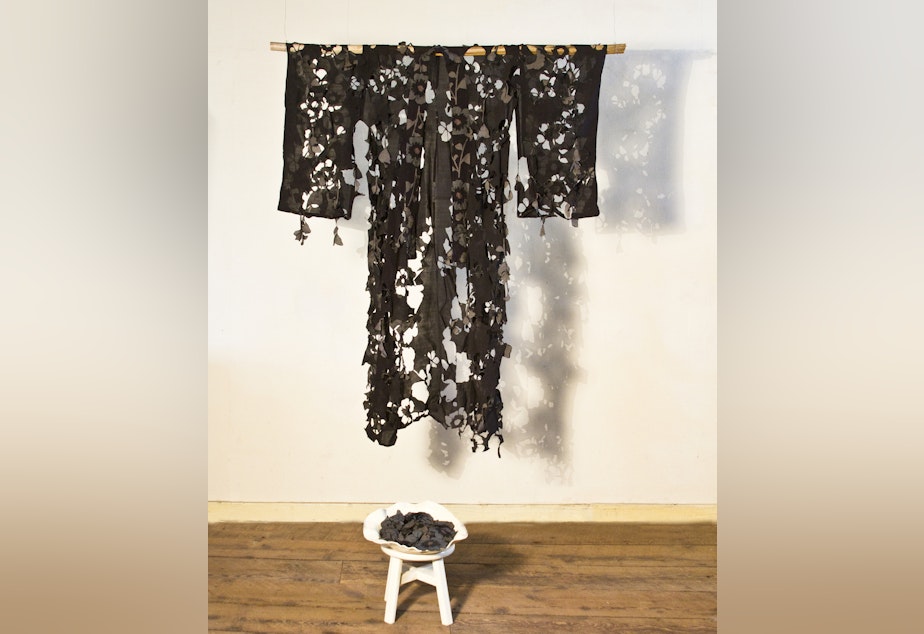Healing generational trauma of Japanese Americans through art

This month marks the 81st anniversary of Executive Order 9066, the World War II order that forcibly removed Japanese Americans on the West Coast and placed them into camps. Many of those who were incarcerated held American citizenship.
The Washington State History Museum in Tacoma is hosting a touring exhibit, "Resilience—A Sansei Sense of Legacy." The exhibit showcases artwork from eight "sansei," third-generation Japanese American artists.
One of the artists is Na Omi Judy Shintani. Eight of her family members were incarcerated in the camps.
Her series of artwork is called "deconstructed kimonos." Kimonos are traditional Japanese clothing. Shintani altered the kimono by cutting out patterns on the garments. Then she created ceramic alters that hold the cut out pieces.
Shintani said altering the kimonos "expresses my loss of connection to my culture. I think that loss has to do with assimilation."
Shintani said many "nisei," second-generation Japanese Americans, after leaving camp wanted their children to be seen as Americans. This is why many parents didn't teach children their mother tongue, Japanese.
Sponsored
The deconstructing of kimonos was Shintani's way of "expressing anger and sorrow of losing our culture, because of a feeling, that we were seen as less American due to being imprisoned."
Shintani said the "symbol of the kimono is very strong," and the unaltered kimonos were in " beautiful forms."
"I think some people find my expression in this way a bit shocking," Shintani said.
Mary Mikel Stump, director of exhibitions at the Washington State Historical exhibit, invited the exhibit to the museum. She says this exhibition is special because "sansei" in many cases will be the last generation to have a direct relationship to the experiences in the camps.
Stump said many "sansei" also experience generational trauma. It's passed down through a Japanese concept called "gaman," which means patience.
Sponsored
"It's the idea of not talking about it and maintaining grace through silence," Stump said.
She said the art work in the exhibit is a space for artists to heal from multi-generational trauma.
"Resilience—A Sansei Sense of Legacy" will be at the Washington State History Museum in Tacoma Feb. 4 through July 7. Tickets can be purchased online or at the museum.




